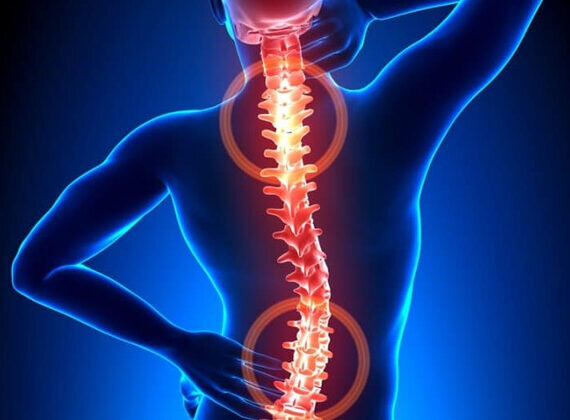Neck & Back Pain
Neck and back pain can lead to significant disability.
Common causes include muscle spasms, arthritis, degenerative disc disease, spinal stenosis, and nerve root compression. Treatment starts conservatively with physical therapy, heat, ice, anti-inflammatories (such as NSAIDs or an anti-inflammatory diet), massage, and acupuncture. A reliable and knowledgeable massage therapist can work with you to relieve muscle pain such as Green Mountain Massage Therapy. If conservartive therapy is not sufficiently helpful, please give us a call. At Interventional Spine of Vermont, providers offer multiple treatments for back and neck pain, including:
Trigger Point Injections
Epidural Steroid Injections
Radiofrequency Ablation
Facet Injections
Epidural Steroid Injection for Neck and Back Pain
Epidural Steroid Injections (ESI) have been clinically proven to relieve symptoms of neck and back pain in most people. The epidural space surrounds the spinal cord and nerves like a sleeve and contains fat, connective tissue, blood vessels, and the dural sac in which nerves are enclosed. With an ESI, steroid is injected into this space and coats the nerve, reducing the inflammation and swelling to which pain is often attributed. This process allows the nerves to heal and, in many cases, only one or two ESI procedures are necessary to provide long-term or even permanent symptom relief.
In other cases, the factors responsible for your pain do not change much over time and the ESI provides only temporary relief (3-4m months). In such instances, continuous exercise regimens, medications, and periodic injections are used to resolve or decrease pain in the long term.
Epidural steroid injections are contraindicated by certain bleeding conditions, active infection, and current anticoagulation. Please let us know if you are currently taking anticoagulants (blood thinners) or have a bleeding disorder so that we may discuss best treatment options. Pain relief typically starts 7-10 days after the injection and lasts for an average of 3-4 months.
Spinal Stenosis | Spondylolysis | Sciatica | Degenerative Disc Disease
A herniated or torn disc can be a cause of neck or back nerve-root pain (1).
A side-view of the spine illustrates how bone spurs and disc bulges press against the nerves.
Radiofrequency Ablation (RFA) For Neck and Back Pain
This procedure works by heating the nerves that transmit pain. The nerves of interest are usually first identified by way of a diagnostic injection or set of injections. During these nerve blocks, the provider will inject local anesthesia to the target nerves to numb them. If the numbing action causes a substantial, if temporary, reduction in neck or back pain, the physician can be diagnostically assured that the ablation of those same nerves may yield the desired results. By doing an RFA, the targeted nerves stop functioning for 6-12months (on average), resulting in significant pain relief during that time. Ablations are done after administering a local anesthetic medicine such as lidocaine to numb the region and prevent pain during the procedure.
Make an appointment today to discuss whether radiofrequency ablation may help with your pain.
Neuropathic Pain | Chronic Join Pain | Prior Spine | Spinal Arthritis
During an RFA, the nerves near the facet joints are heated with radio-frequency energy to limit their function and reduce pain.
Facet Joints Injection For Neck and Back Pain
In some patients, back pain is caused by inflammation or arthritis in the joints of the spine, called facets. Injection of an anti-inflammatory (i.e., a steroid) into the facet joints can lead to profound relief that lasts for several months.
Make an appointment today to discuss whether facet injections may help with your pain.
Thoracic Pain | Spondylosis | Facet Syndrome | Cervicogenic Headaches
The facet joints can become inflamed by arthritis, leading to impingement of the nearby nerves.
Trigger Point Injection for Neck and Back Pain
Sometimes, constant or achy pain can be attributed to muscle tension. The pain may be mild or severe, constant or intermittent, and may be worsened by certain postures or activities. Typically, this muscular pain can be treated with physical therapy, massage, acupuncture, topical creams, and gentle stretches.
A trigger point injection is an injection of anti-inflammatory (steroid) along with a local anesthetic in the area of maximum tenderness; it can be profoundly beneficial when used in conjunction with physical therapy to release tight muscles and relieve pain.
Make an appointment today to see if trigger point injections may be used to relieve your pain.
Neck Pain | Thoracic Pain | Scoliosis | Pain Between Your Shoulders
Common sites for Trigger Point Injections in the back and neck include the Trapezius and the Levator Scapulae
The information contained here is not intended to replace the medical advice of your doctor or healthcare provider. Please consult your healthcare provider for advice about a specific medical condition






